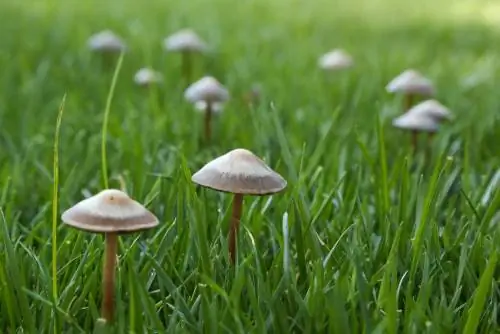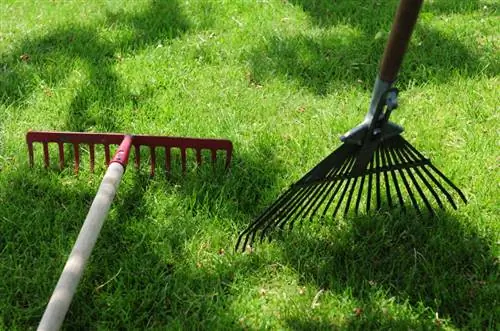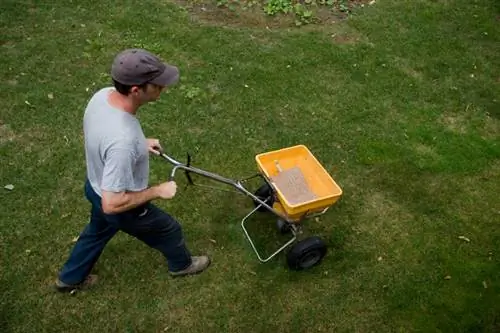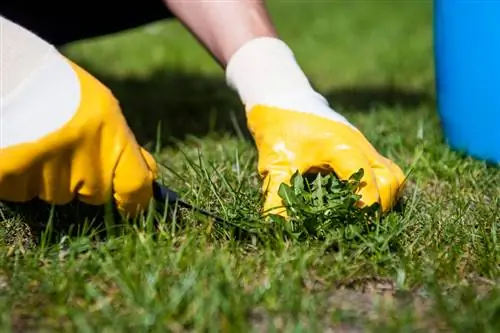- Author admin [email protected].
- Public 2023-12-16 16:46.
- Last modified 2025-01-23 11:22.
Collecting leaves in autumn is truly a laborious task. To the delight of many gardeners, experts recommend leaving the leaves on beds as a natural fertilizer. But does that also apply to the lawn? How does lawn develop under a thick layer of leaves in winter?
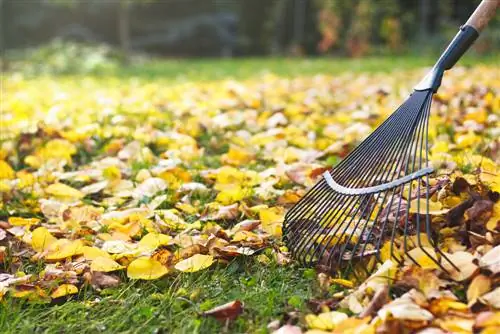
Should you leave leaves on lawns?
Leaf leaves should be removed from lawns to allow adequate light and oxygen for the grass and to prevent yellow spots or rot. However, leaves can be left on beds as a natural fertilizer.
Be sure to remove leaves from the lawn
In contrast to your plants, which usually go into hibernation at the same time as the trees shed their leaves, your lawn continues to grow, although not as quickly. Right now, the grass relies on sufficient oxygen and light to convert the factors into energy. Autumn leaves left lying around would not allow light or oxygen to reach the stalks. This resulted in yellow spots that became noticeable in spring at the latest. On top of that, rot can even occur if the moisture doesn't escape from the leaves.
What to do about stains on the lawn?
The stains mentioned are the rust fungus. When it occurs, yellowish pustules usually appear in places on the lawn. This is, among other things, a sign of too few nutrients in the soil. Since you shouldn't fertilize your lawn with leaves, a potassium-containing lawn fertilizer (€33.00 on Amazon) will help in this case. You should also mow your lawn briefly before the onset of winter.
Useful tips for collecting leaves
The only question left is how best to remove the leaves from the lawn. The most common, although laborious, method is raking. However, the work is much quicker with a lawnmower. In addition, the following advantages arise with machine help:
- Leaves are shredded at the same time
- Leaves stay in the catcher
- no bending over
- Leaves are completely removed
- also possible on windy days


